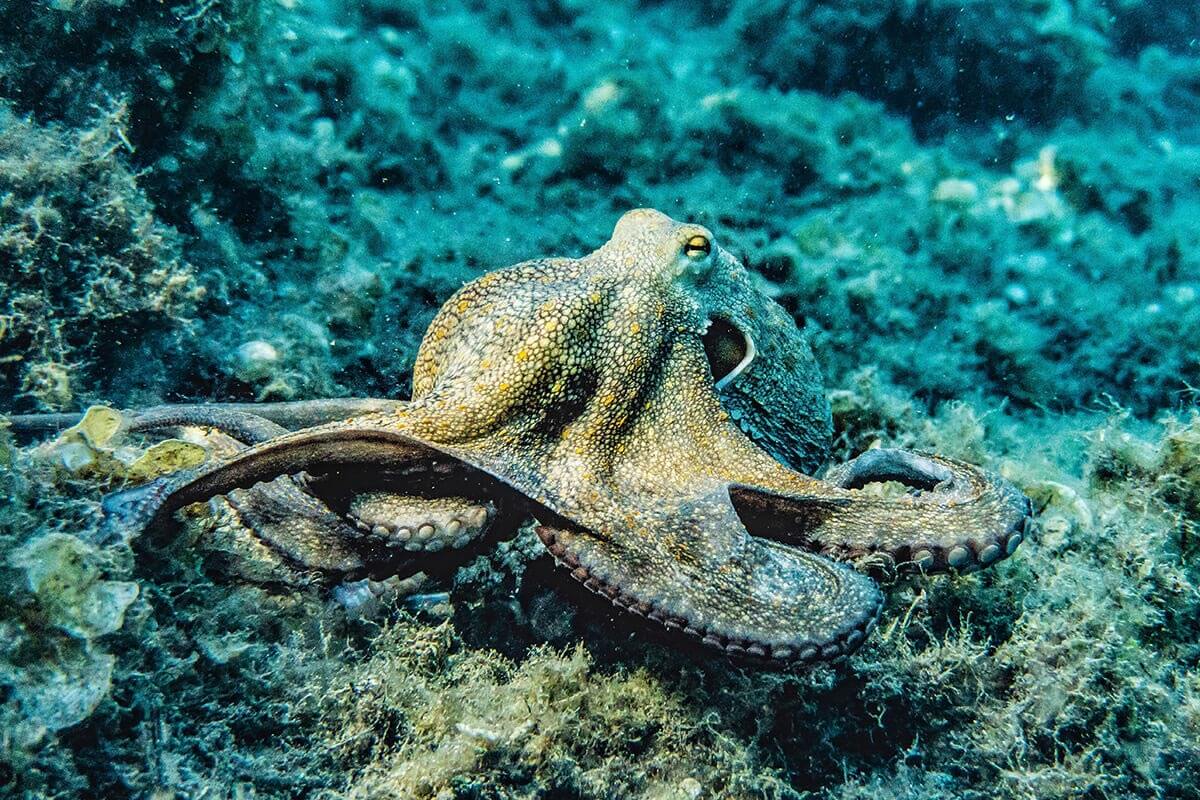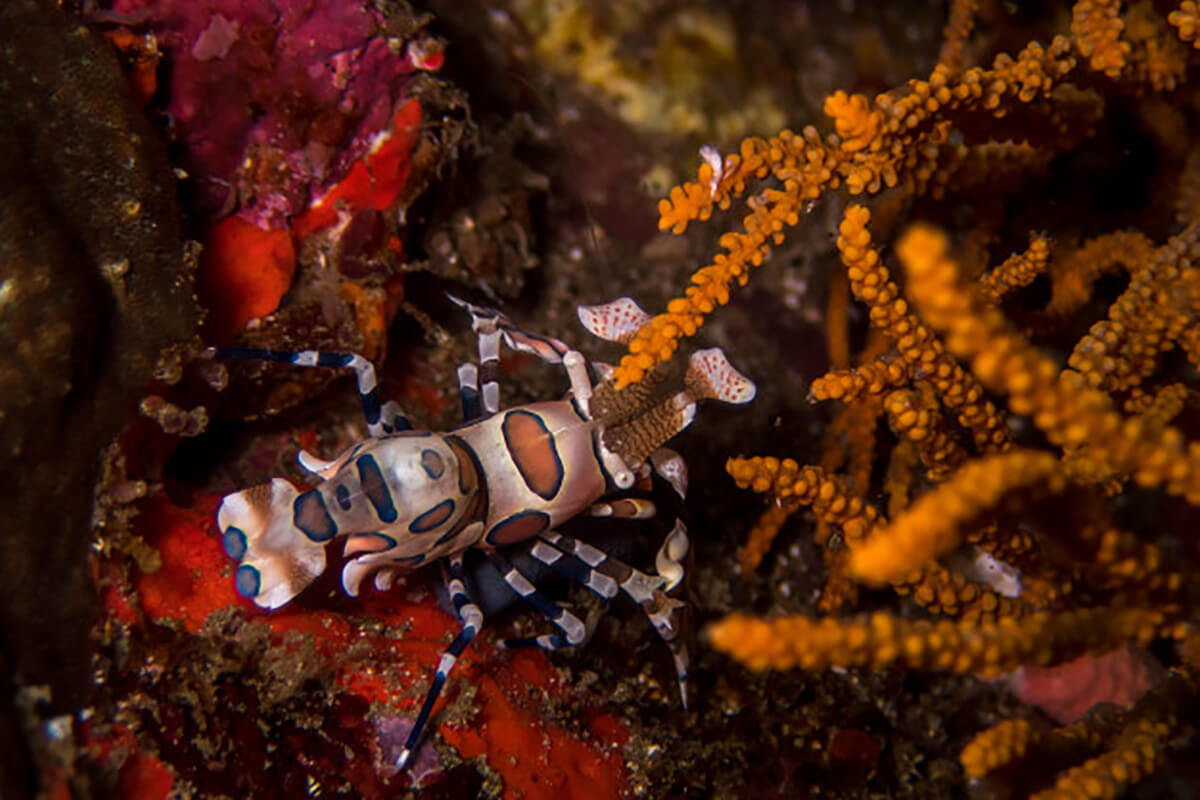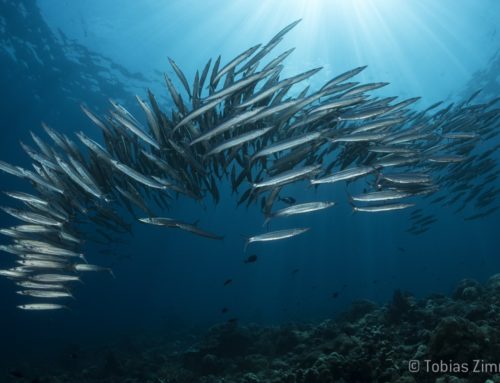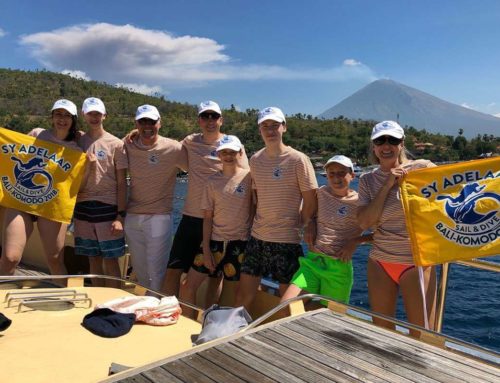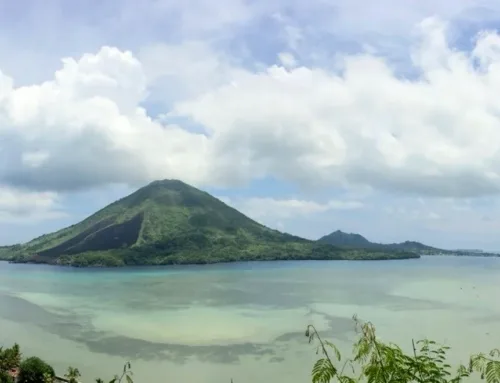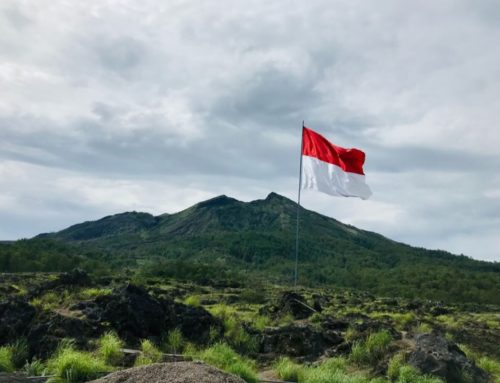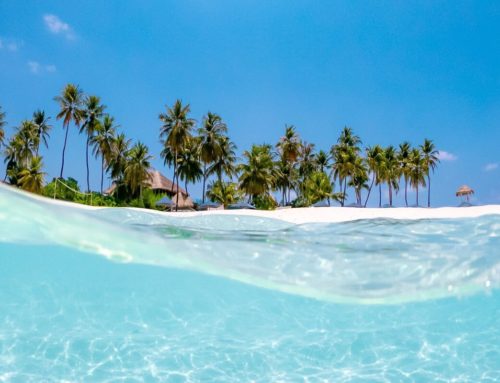Our Cruise Directors present their favourite dive sites: Pasarwajo Bay
At first glance this large bay in the southeast coast of the island of Buton is an unlikely candidate to be included in a series about diving top spots of Indonesia. Despite its proximity to Wakatobi’s pristine coral reef systems, Pasarwajo bay is different, both above and below the water.
The sleepy provincial town of Pasarwajo provides a distinctly more ‘terrestrial’ backdrop than the sandbanks, atolls, and small islands of Wakatobi, and underwater nothing hints at the fact that the bay lies merely a few hours away from one of the most biodiverse reefs in the world that is home to 750 of the 850 globally known tropical reef fish species. Pasarwajo Bay’s underwater landscape is more barren, mainly consisting of gentle rubble slopes and some sea grass meadows. There are some hard coral reef patches here and there – but they are not the principal reason why we like diving here.
The fascination of diving in places like Pasarwajo lies not in the in-your-face beauty of coral reef sites, but in the thrill of searching for, spotting, observing, and photographing the rare, odd and captivating creatures that call these kinds of tropical marine habitats home. This sort of diving has become more and more popular over the last 15 years or so, resulting in the development of complete specialised dive regions that cater for its aficionados. In Indonesia alone, Lembeh Strait, Ambon Bay, parts of the Alor archipelago, Komodo and Bali have become well known destinations for critter hunters.
It is often called ‘muck’ diving; however, we feel the derogative implication of this term is justified for only a handful sites of the above-mentioned destinations. Most spots are clean and not necessarily more impacted by remnants of anthropogenic activity than coral reef sites. We therefore prefer to refer to this passion as macro or critter diving.
Despite all the sites being literally in front of the town, Pasarwajo is a clean macro heaven. Due to its rubble substrate visibility is generally excellent. Less well known than other critter destinations, Pasarwajo boasts a selection of different sites – enough to spend several days’ worth of excellent diving. Adelaar spends normally a whole day here on her trips to Wakatobi, cherry picking the best sites – typically with no other divers around, as this region of Southeast Sulawesi is still relatively remote with so far no dive resorts nearby.
One of the richest sites of the area is Chicky Beach. It got its name from the cheeky local kids in their rowing boats who are with us before and after the dive – and the English orthography skills of a dive guide when he drew the briefing map on the white board. On the bright rubble substrate and seagrass patches of the slope going down from the town’s beach divers can find different species of frogfish, thorny seahorses, long armed octopi, fire sea urchins with zebra crabs and Coleman shrimps living in them, flying gurnards, halimeda, robust and ornate ghost pipefish, several species of nudibranchs, wunderpus, different cuttlefish species, tiger shrimps and other treasures. The most elusive inhabitant of Chicky Beach, however, is without doubt the very rare and beautiful mototi octopus – a species until recently only known from Okinawa, Eastern Australia and remote Rapa Island in the South Pacific.
Piers are always worth exploring, as they provide shelter and structure for marine life to hide and colonise. There are several in Pasarwajo, the two most regularly dived ones are called Magic Pier and Asphalt Pier (named after one of the main exports of Buton island). Apart from the critters found beneath and around the piers, these sites also invite wide angle photographers to take advantage of the play of light and shadows – and the schooling fish in clear water between the pillars.
One of the spots in the bay that is dominated rather by hard corals than rubble is called Vatican – due to the many species of cardinal fish that can be found in great numbers on this reef. A goal of every ambitious underwater photographer is to get a shot of a male cardinal fish being a good father (rather than being a good celibacy respecting cardinal…), brooding the eggs containing the next generation of cardinal fish in his mouth.
Another strategy of fish reproduction is the highlight of the dusk to night dive on another pier called Mandarin City. The mandarin fish here are larger and more active than in other places – and seem to be less bothered by divers watching them performing their mating rituals. This makes them excellent subjects for photographers and videographers.
The stop to visit off the beaten track Pasarwajo and its underwater creatures adds diversity to any trip to Wakatobi. We will be delighted assisting you to find your favourite critter and introduce you to some new ones.
Reto, Cruise Director SY Adelaar ⚓️
Pasarwajo can be visited and dived on the following itineraries:
- Cousteau’s Nirvana (Maumere – Wakatobi – Bau Bau)
- Cousteau’s Nirvana (Bau Bau – Wakatobi – Maumere)
- Any private charter that includes Southeast Sulawesi




